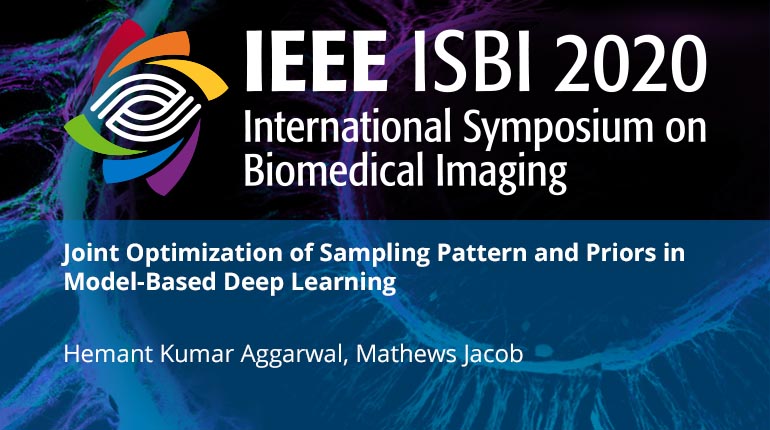
Already purchased this program?
Login to View
This video program is a part of the Premium package:
Joint Optimization of Sampling Pattern and Priors in Model-Based Deep Learning
- IEEE MemberUS $11.00
- Society MemberUS $0.00
- IEEE Student MemberUS $11.00
- Non-IEEE MemberUS $15.00
Joint Optimization of Sampling Pattern and Priors in Model-Based Deep Learning
Deep learning methods are emerging as powerful alternatives for compressed sensing MRI to recover images from highly undersampled data. Unlike compressed sensing, the image redundancies that are captured by these models are not well understood. The lack of theoretical understanding also makes it challenging to choose the sampling pattern that would yield the best possible recovery. To overcome these challenges, we propose to optimize the sampling patterns and the parameters of the reconstruction block in a model-based deep learning framework. We show that the joint optimization by the model-based strategy results in improved performance than direct inversion CNN schemes due to better decoupling of the effect of sampling and image properties. The quantitative and qualitative results confirm the benefits of joint optimization by the model-based scheme over the direct inversion strategy.
Deep learning methods are emerging as powerful alternatives for compressed sensing MRI to recover images from highly undersampled data. Unlike compressed sensing, the image redundancies that are captured by these models are not well understood. The lack of theoretical understanding also makes it challenging to choose the sampling pattern that would yield the best possible recovery. To overcome these challenges, we propose to optimize the sampling patterns and the parameters of the reconstruction block in a model-based deep learning framework. We show that the joint optimization by the model-based strategy results in improved performance than direct inversion CNN schemes due to better decoupling of the effect of sampling and image properties. The quantitative and qualitative results confirm the benefits of joint optimization by the model-based scheme over the direct inversion strategy.
 Cart
Cart Create Account
Create Account Sign In
Sign In





